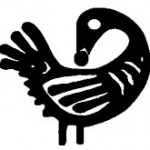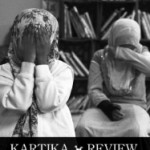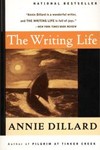 This month, I was asked to address the graduating students from the African American Studies minor at my university. While I declined the invitation with a great deal of regret, I also thought a great deal about what I would say. So I wrote my remarks anyway, and decided to post them here.
This month, I was asked to address the graduating students from the African American Studies minor at my university. While I declined the invitation with a great deal of regret, I also thought a great deal about what I would say. So I wrote my remarks anyway, and decided to post them here.
Good afternoon.
My name is Tamiko Nimura, and for the last seven years, I have been a professor of English and African American Studies here. First, I want to congratulate every student receiving their degree this weekend. It is a great privilege to be able to speak to you all, and because I understand that we have greater celebrations ahead, I’ll be brief. (At least, as brief as I can: an occupational hazard of being a professor is that we have a very hard time being brief.)
English professors may like the language of metaphor and hyperbole, but I am not exaggerating when I tell you that African American literature and culture changed my life. Studying African American literature taught me about wholeness: the responsibility, as Toni Cade Bambara puts it, that comes with being well. It taught me about agency: what it means to have the right to speak, choose, act freely in this world. It taught me about interdependence: the reciprocity and interconnection embedded in the principle of Ubuntu. It taught me about Sankofa: the necessity of looking back in order to move forward. Studying writers like Leopold Senghor taught me that reading and writing could be revolutionary acts. Working with the words of the great activist Bernice Reagon taught me almost everything I know about coalition: the necessary but difficult act of building communities across and through difference. African American studies broke down the barriers that the rest of my education had created for me: the barriers between language and action.
Because of my study of African American literature, I was able to visit the 6th graders down at Jason Lee Middle School here in Tacoma, and tell them what being an English professor has meant to me: Being an English professor has meant that I teach people about reading and writing, and how those two acts can help us see the world differently.
In his great novel Mumbo Jumbo, the African American writer Ishmael Reed (who was one of my college teachers), talks about the importance of the loas, or ancestral spirits. He talks about the enormous arrogance, the tangible dangers, of believing “that the world can be interpreted through a single loa.” Interpreting the world through only one lens, or one way of being, Reed argues, can be dangerous for the soul. In my study of African American and American ethnic literatures, I have found an interdisciplinary space to merge my interests in history, identity, and literature.
Now, this celebration is really about you and your accomplishments. But if you’ll forgive a brief personal story from my undergraduate years: I saw Reed’s words put into practice when I wrote my senior thesis at UC Berkeley. I was writing about writers with experiences like mine: third-generation Japanese Americans, who were buy cheap ventolin inhaler trying to represent the impact of their relatives’ imprisonment in camps, during World War II. I realized very early in the writing process that I could not write about the literature without including some historical context. The characters, their motivations, and their silences, simply did not make any sense without the external knowledge of internment camps.
As stunning as it sounds now, this was the first time that I had considered including historical context in an undergraduate paper involving literary analysis. I went to my thesis advisor, and described my quandary. “I think I have to include some history,” I stammered. “I think you’re right,” he replied. “But–can I do that?” I asked. “Yes,” he replied. “Now, not everyone in this department would let you do that, but I agree with you that it’s necessary.”
Because I was writing a paper about silence and memory and history, I was struck by the terrible irony of my situation. If I had had a different thesis advisor, I would have been told to suppress a whole chapter of American history, including my own family’s history.
It’s in that space— the space between reading, literature, history, and the mechanisms that we use to hear and suppress certain voices—that my desire to study African American literature was born. That’s the space where we put several loas, several ancestral spirits, several ways of seeing the world, into practice. That’s the dynamic intellectual and emotional space of African American studies.
Like some of you, perhaps, I do not know just what the coming year will bring me. I have just finished my last year teaching here. What I do know is that African American literature and culture, in all their power, can help to keep us steady through the uncertainty and focused on the service of social justice.
You see, perhaps the most powerful concept I learned from my study of African American literature is the concept of the call and response. As I understand it, the call is part greeting, and part exhortation to action. If I say “Good afternoon,” in the call and response context, I would expect a “Good afternoon” in reply. The energy of your response is supposed to match my call. And during our time together, we would build community: my speech would also be, in part, your act.
So I hope that those of us who are leaving can see our leaving not as a time to rest, but as a call to action. There are far too many places of inequality, of injustice, of iniquity, in the world for us to rest. The world demands a response.
African American Studies challenges us to be part of the co-creation, the response. And African American writers have opened the spaces for our courage to enter. As the extraordinary poet and activist Audre Lorde writes: “When I dare to be powerful – to use my strength in the service of my vision, then it becomes less and less important whether I am afraid.”
Thank you for your time, and my congratulations to each and every one of you.
 Here is a link to Kartika Review, the wonderful Asian American literary magazine that accepted my creative nonfiction essay, “How It Feels to Inherit Camp.” You can download the essay and the issue, but please consider buying a copy of the journal itself–it is a small, volunteer-operated nonprofit organization. Even before I submitted anything to the journal, I had been reading and using it as a resource in my literature classrooms. It incorporates both established and emerging generic ventolin inhaler voices in Asian American literature, and I’m honored to be included in this season’s issue. This month’s issue includes an interview with Jessica Hagedorn, who is one of my very favorite Asian American authors.
Here is a link to Kartika Review, the wonderful Asian American literary magazine that accepted my creative nonfiction essay, “How It Feels to Inherit Camp.” You can download the essay and the issue, but please consider buying a copy of the journal itself–it is a small, volunteer-operated nonprofit organization. Even before I submitted anything to the journal, I had been reading and using it as a resource in my literature classrooms. It incorporates both established and emerging generic ventolin inhaler voices in Asian American literature, and I’m honored to be included in this season’s issue. This month’s issue includes an interview with Jessica Hagedorn, who is one of my very favorite Asian American authors.




